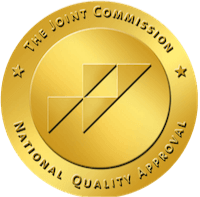
How to Fill Respiratory Therapist Positions Amidst the COIVD-19 Pandemic
As the number of patients with COVID-19 related conditions surged in medical facilities, most administrators rushed to acquire ventilators. Critically-ill patients struggled to keep their blood oxygenated. Respiratory therapists were needed at the bedside, operating the machine and ensuring that the oxygen is getting in.
As the world grappled with the acute shortage of ventilators, a new realization came to the fore: a shortage of health workers to operate them. Respiratory therapists would track the patient’s oxygen levels, provide supplemental oxygen or set up the mechanical ventilators to assist the patient in breathing.
A respiratory therapist position places the health worker at the center of the fight against the pandemic, having more contact with COVID-19 patients than any other staff in the hospitals. Yet, you may not hear about them as often as doctors and nurses when the country heaps praise on medical workers fighting the Coronavirus.
What Does a Respiratory Therapist Position Entail?
According to the American Association for Respiratory Care, there are approximately 111,020 licensed respiratory therapists in the US. In normal times, the respiratory therapist’s job entails looking after patients who have trouble breathing. A respiratory therapist would treat patients who have chronic conditions such as asthma, chronic bronchitis, emphysema, and chronic obstructive pulmonary disease (COPD). The respiratory therapist’s skills may also be vital in responding to emergencies such as premature babies with underdeveloped lungs, heart attacks, or patients suffering a stroke.
The coronavirus binds to receptors in the lungs, which can lead to pneumonia, shortness of breath, and in critical conditions, acute respiratory distress syndrome. The patient may require supplemental oxygen through a nasal cannula or intubation with a mechanical ventilator in worst-case scenarios. The respiratory therapist’s job allows them to track the patient’s oxygen levels and determine if and when to use a specific treatment option.
HR Headaches to Fill Respiratory Therapist Positions
The Centers for Disease Control and Prevention reports that over 16 million Americans are living with COPD. And with the last baby boomers turning 55 in 2020, the future healthcare needs necessitating the services of a respiratory therapist are increasing. The job prospects in the field are promising.
The COVID-19 pandemic created an acute shortage of experts, with most hospitals turning towards staffing agencies to help them fill the respiratory therapist position. With the pool of candidates being seriously limited, hospital administrators are offering per diem nursing jobs to help cover their shortages.
Healthcare Staffing Agencies Are the Answer
Most respiratory therapists were willing to relocate to overburdened cities as the COVID-19 numbers surged. Healthcare staffing agencies can help medical facilities that wish to fill their respiratory therapist positions to find the right specialists for the jobs. The leading agencies have recruits available that can begin work in no time. The staffing company conducts background checks and educational verifications to ensure that you find a perfect match for your hospital. Healthcare staffing agencies can help calm your HR’s nightmare of finding the right experts to fill the position.
Get the Right Person
The coronavirus pandemic has shone the light on respiratory therapists as essential professionals in the healthcare industry. If you wish to fill a respiratory therapist position in your facility, reach out to Concentric Healthcare Staffing. Let’s discuss your needs and concerns to help you find the best recruit for you.



